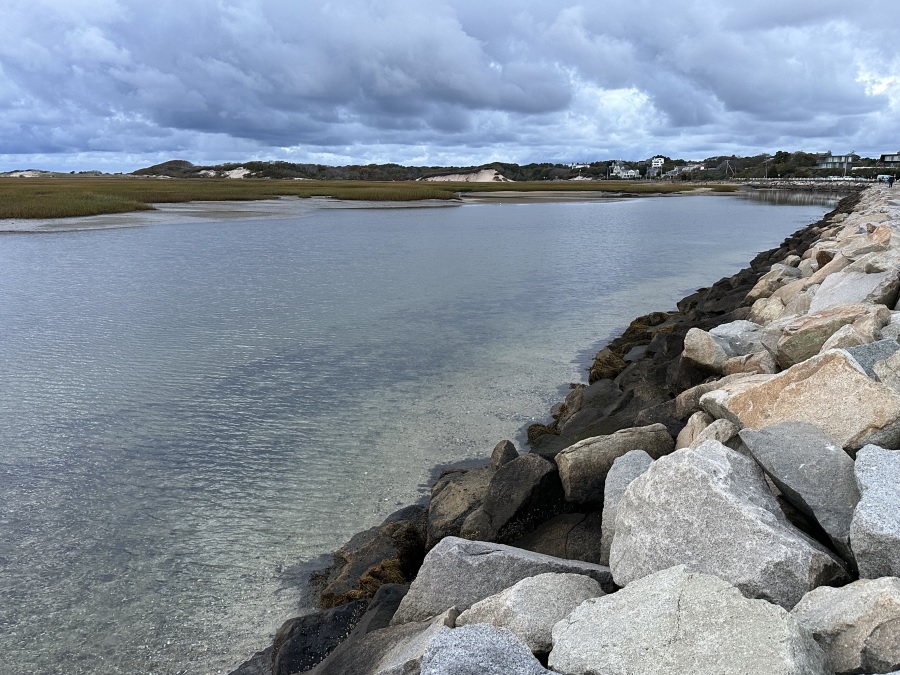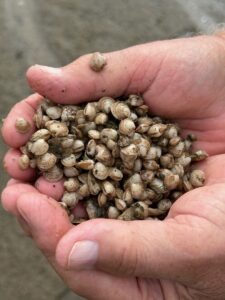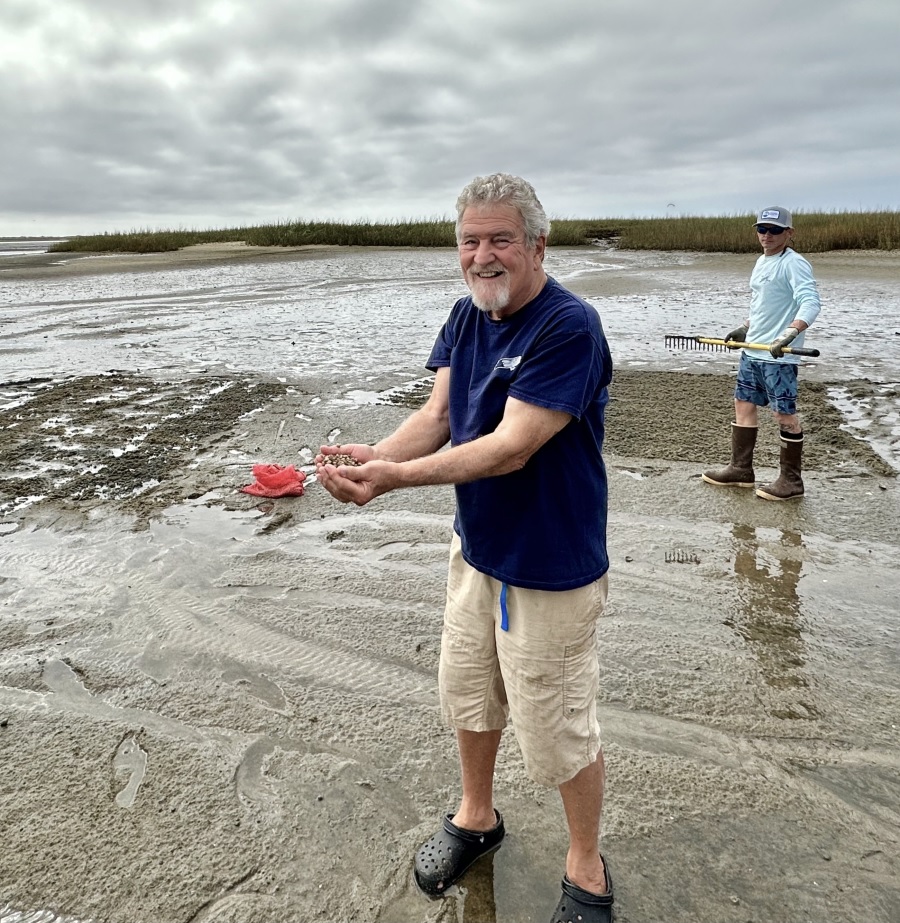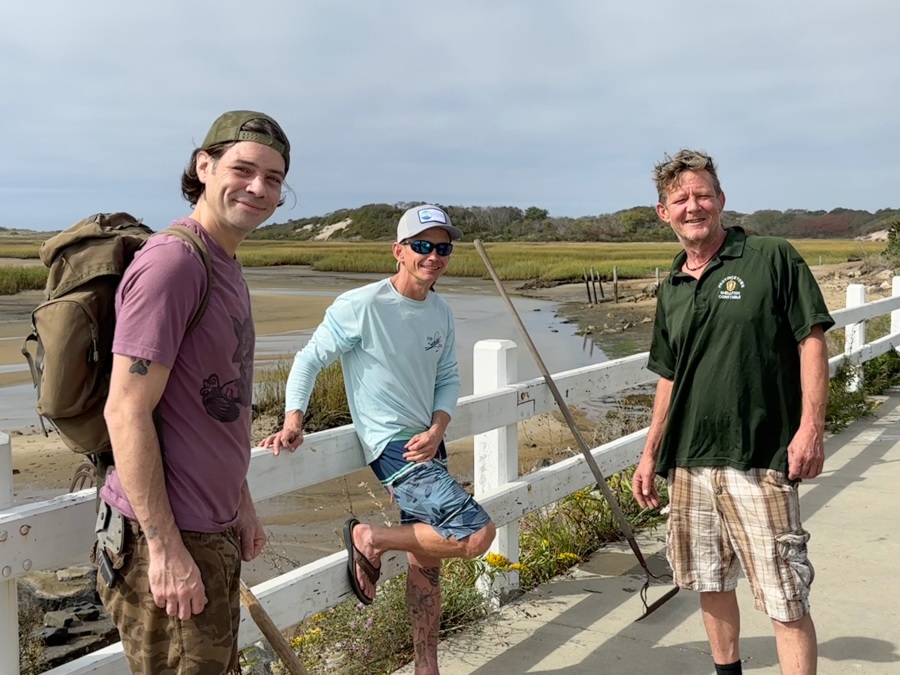PROVINCETOWN — About 20 recreational clammers gathered on Oct. 6 to experience a clamming day in reverse. Instead of walking out to the flats empty-handed and gathering up a dinner’s worth of littlenecks, the group hauled buckets of tiny seed clams out to the flats, raked up the mud, and then threw the animals in. This year’s seed will be large enough to harvest sometime in 2025.
“It’s an investment in our clams for the future, and it’s really fun,” said Marc Guerrette, a clamming enthusiast who rarely misses a weekend of digging during the winter.

The volunteers included Guerrette, Dennis Minsky, and Brewster resident Dale Gorman, who spends time with friends in Provincetown. They were instructed to shallowly rake the flats, scatter the seed, and then stomp around to help cover the baby bivalves in a light layer of mud. Seagulls hovered in the air, looking for strays. There were 250,000 clams to scatter, but the work went remarkably quickly — perhaps because some clammers had arrived before the appointed hour to make sure their favorite spots on the flats were well seeded.
Provincetown Shellfish Constable Steve Wisbauer had already cast about 290,000 even smaller seed clams in July with a few helpers. Those clams came from the Aquacultural Research Corporation (A.R.C.) — Cape Cod’s only hatchery, located in Dennis — and cost $5,321, or about $18 per 1,000 seed clams.

The October batch also came from A.R.C. but were older and larger. They cost $11,487, or about $46 per 1,000. The first batch was paid for with state money set aside for shellfish propagation; the second batch was paid for from the town’s shellfish budget.
“The thing about a hatchery is you can cheat nature,” Wisbauer said. By starting the quahogs in the hatchery earlier than wild clams would normally spawn, it’s possible to put baby clams into the wild that are a bit too large for their natural predators.
“This clam is too big for that newborn crab to eat, so we’ve tipped the balance,” Wisbauer said. “Nature is a machine, it’s a symphony, and it’s the minutiae where you find your success.”
Wisbauer had been sourcing his seed clams from the Muscongus Bay hatchery in Maine — “it’s good for genetic diversity,” he said — but a marine heat wave there interrupted supply. The clams from A.R.C. have been flourishing, he said.

Gorman works for oyster farmers in Barnstable and recently began farming clams there as well. “A couple of years ago, when all my buddies were buying cryptocurrency, I was like, ‘Maybe I’ll buy something I know a little bit about,’ ” he said.
Profits are much higher in oysters, but they are very labor intensive, Gorman said. Clams produce less money but require much less work.
Gorman described the process he follows on the Barnstable flats. First, he scatters clam seed in defined patches and then stakes nets over them to keep predators off, he said. The clams move up and down in the mud but don’t really travel far from where they’re planted. “Scallops are the only bivalve that’s mobile,” Gorman said.

Gorman has to clean his nets to make sure water can circulate freely, but that’s about all his clams require, he said. The biggest problem is the time between the upfront investment and the harvest.
“Shellfishing is tough for young people, really any people, because it’s an upfront expense, and then you have to wait three years to get a return,” Gorman said. Falmouth has a program in which the town leases new growers up to $20,000 worth of supplies and then recoup a few pennies per harvested animal until the debt is paid off, Gorman said.
“Falmouth is extremely forward-thinking,” he said. “The farmers not only pay them back, but they’re required to give them data on the biomass of the animals so the town can calculate how much nitrogen is being removed from the watershed. It’s pretty genius.”



